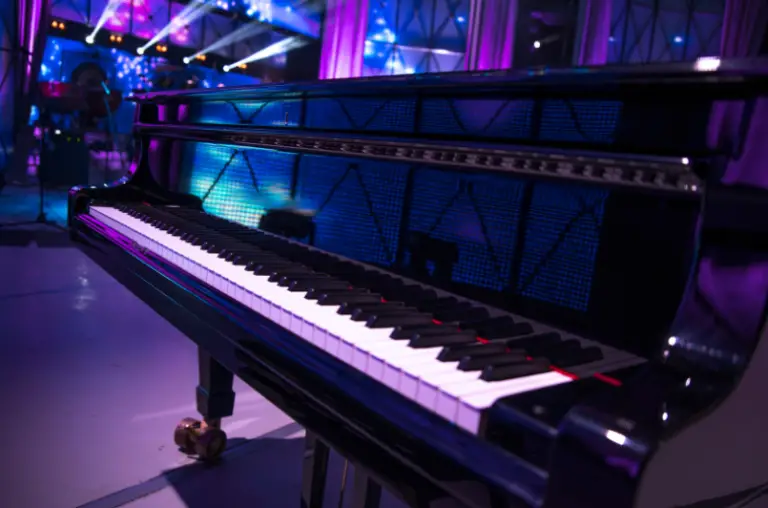Table of Contents
Introduction
Many people ask: “what exactly is the best stage piano out there?”, so we’ll have a review of Yamaha CP4 Vs CP40 and all of their specs and features.
Stage pianos are different from home keyboards because they are built to provide you with a great performance on stage, with effects on the fly. Both these Yamaha products look the same, but there are significant differences between the two.
 Yamaha Cp40 Stage Piano
Yamaha Cp40 Stage Piano
As a stage piano, this one is made with various included add-ons, such as the FC3A sustain pedal for dynamics and the realistic-sounding CFIIIS Premium Grand Piano Voice to make it sound like a real performance piano. You can also worry less about how your piano sounds on the amplifier due to the 3-Band Master EQ that you can tweak on-board.
 Yamaha Cp4 Stage Piano Demo
Yamaha Cp4 Stage Piano Demo
If you want to know what the Yamaha Cp4 sounds like, here’s a YouTube demo of the piano in action. Because the Cp4 GH3 keyboard has three sensors, it is much more dynamic than your average stage keyboard or piano that lets you play soft and hard tunes with melodic and rhythmic dynamics.
Yamaha Cp4 Stage Piano Sounds
The great thing about the CP4 is that it has various vintage piano sounds and it also allows you to layer sounds or split the keyboard into different sounds, which makes it a total performance package. You don’t just get piano sounds on one keyboard: you can also use the included bass, clavinet, organ, strings, and pad sounds onboard.
Having different sounds can make it easy for you to back up your singing or solo piano with more dynamic instruments. For example, adding strings or pads to the background makes the sound thicker while using the brass sounds makes amend for a lead player even if you don’t have a saxophone player in the band.
Overall, having a choice of different sounds makes your live performance more dynamic and less boring than with the usual keyboard or piano sounds that you’ll often hear from other keyboard players.
Number of Presets
As for the number of voices or presets, the CP4 has 433 voices and 174 drums, while the CP40 only has 297 voices and 117 drums.
This clearly means that the CP4 has more effects to choose from, such as brass instruments, pads, and even bass. You can even layer these sounds into a built-in symphony on stage so that you can become a one-person band by yourself – which is cool and clever.
 The winner in this round: Yamaha CP4
The winner in this round: Yamaha CP4
Keys
Both the CP4 and the CP4 have 88 GHS weighted keys. However, the CP4 has a unique wood-grade set with synthetic ivory key tops. This means that CP4 may have a better durability and sound as compared to the CP40 since it is made with the premium material.
Having 88 keys in your keyboard makes it easy for you to create melodies or play classical music with higher octaves, which cannot be done in a regular keyboard that has fewer keys or so. Also, it pays to have a keyboard with weighted keys so that it sounds like a real grand piano with its lows and highs. A material that is durable enough to withstand many performances can also be worth your money and time, which is what the CP4 offers.
The winner in this round: Yamaha CP4
Effects and Filters
Both the CP4 and the CP40 have 5 effects: reverb, chorus, master compressor, master EQ and insertion effect.
The great thing about having effects on the fly in a stage keyboard is that you can make your sound less boring in front of a live audience. You can add reverb on the go to the keyboard to make an ambient effect or add it to a connected microphone.
The EQ can help out when it comes down to fine-tuning your piano sounds depending on your amplifier. For example, if your amp sucks at the moment, you can actually make amends by tweaking the EQ settings on your keyboard, which is definitely useful.
The winner in this round: both
Assembly and Connectivity
The CP4 assembles in 3 parts while the CP4 has only 2 parts to assemble. Also, the CP4 has XLR output while the CP40 does not. You get 2 jack connections for the foot controller of the CP4, while there’s only 1 jack for the CP40.
Having an XLR output means that you can connect an XLR microphone (studio or condenser microphone) to your keyboard for a total performance package. This would be useful if you’re both a singer and a piano player on stage, especially for acoustic performances.
The winner in this round: Yamaha CP4
Price
As for the price, the Yamaha CP4 is actually pricier than the CP40, mostly because it has a lot of specs above the latter. You can check the prices of the CP4 and the CP40 on Amazon right now, just to be sure.
 The winner in this round: Yamaha CP40
The winner in this round: Yamaha CP40
User Interface
Both the CP and the CP4 has a display with 40 characters × 2 lines while it has a character LCD with back-light for you to easily read the settings and the like.
Having an LCD that is easy to read makes it simple for you to operate the keyboard while on stage. The venue can get very dark so it pays to have a user interface that does not give you too much hassle and fuss overall.
The winner in this round: both
Conclusion
As you can clearly see from the roundup, the Yamaha CP4 seems to be much better in terms of specs as compared to the Yamaha CP40. Despite the price difference, which is kind of significant, many people would rather have a slightly pricier CP4 if it means it will have many great effects and specs. We hope this small guide helps you to choose which of these two Yamaha products would be the best stage piano out there!


